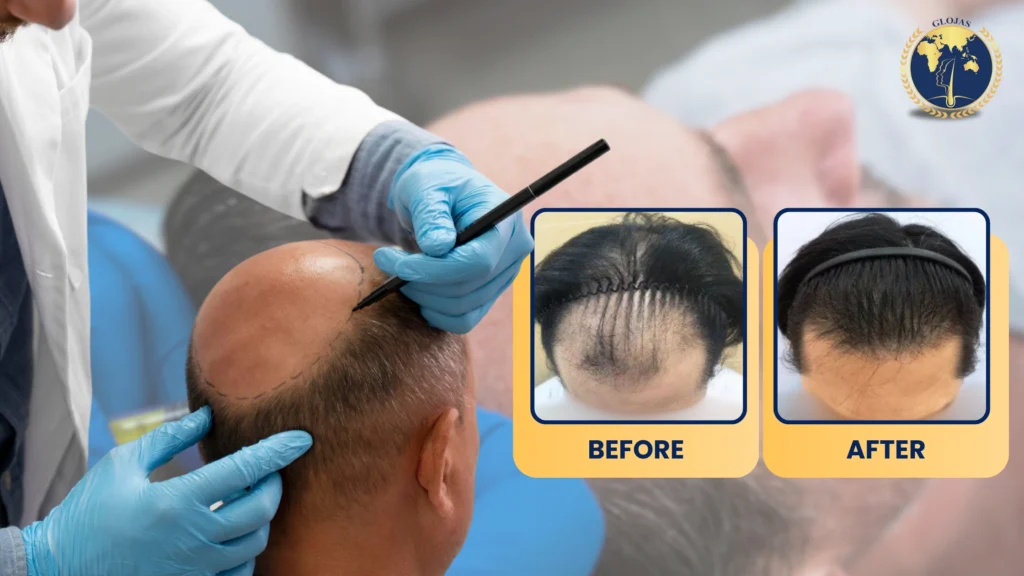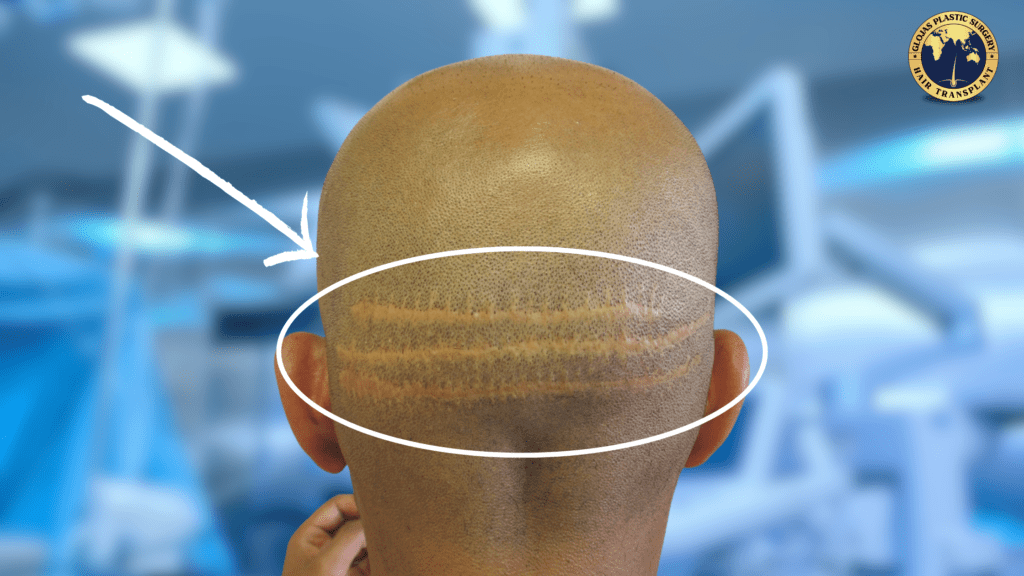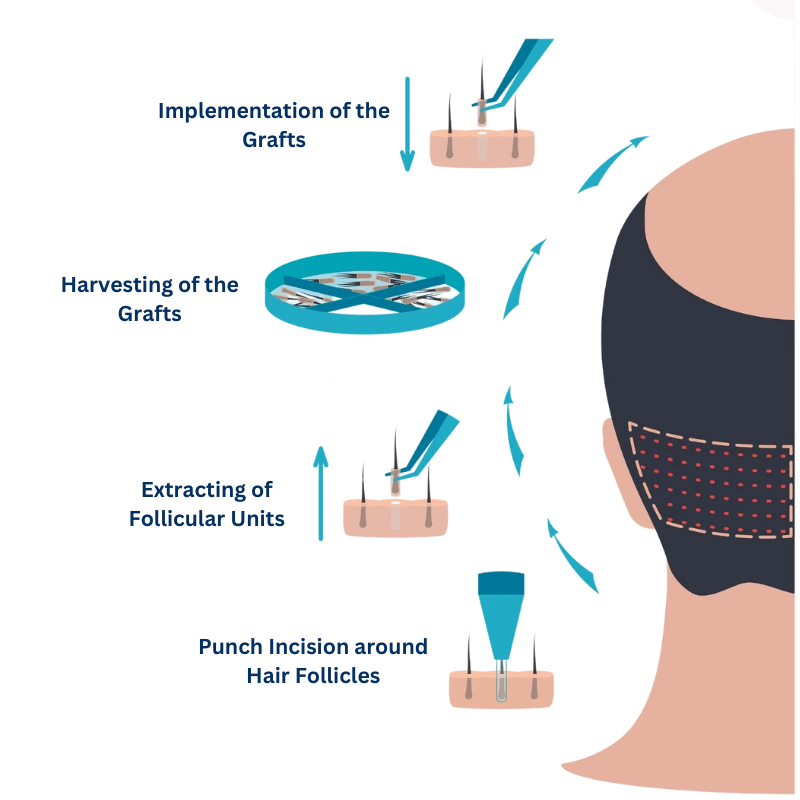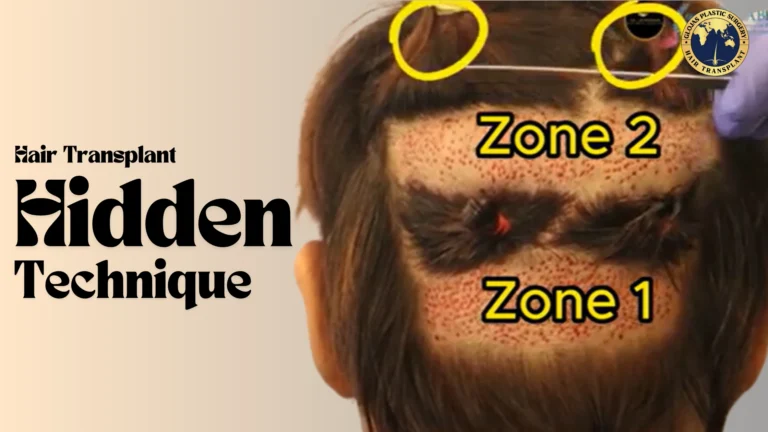Introduction
Are you dreaming of a full head of hair but worried about the visible scars that come with traditional hair transplant surgeries? You’re not alone. Many are turning to a lesser-known but highly effective technique known as the “hidden donor technique.” This innovative approach minimizes scarring and maximizes the natural-looking results of hair restoration. In this blog, we delve deeper into how this hidden technique works and why it might be the best option for restoring your hair with confidence.
FUE Hair Transplant

Follicular Unit Extraction (FUE) is a type of hair transplant done by harvesting individual hair follicles from your skin and implanting them in another part of your body where the hair’s thinner or absent. This method is highly favored for its precision and natural results.
Procedure
The FUE procedure begins with the surgeon administering local anesthesia to numb the donor area, ensuring comfort throughout the process. Next, using a micro hollow needle, the surgeon delicately extracts each follicular unit (typically containing 1 to 4 hairs). These grafts are preserved in a special solution to maintain their viability before they are implanted into the target area. The implantation process involves making tiny incisions in the scalp to place the follicular units according to the hair’s natural growth direction, which helps achieve a more natural look. Post-procedure, patients can expect minimal downtime and are usually able to return to their routine within a couple of days.
Hair Transplant Hidden Technique
A revolutionary advancement in the field of hair restoration is the Hidden Donor Technique, a subset of FUE. This method significantly enhances aesthetic outcomes by minimizing visible scarring and allowing for faster recovery.
How It Here Works?
The Hidden Donor Technique involves extracting hair follicles from areas that are not usually exposed or those covered by existing hair. Typically, these areas are at the back of the head or behind the ears. The main goal is to utilize parts of the donor area that can still be covered by hair if needed, avoiding any noticeable thinning. Through microscopic instruments and skilled precision, surgeons are able to access these hidden areas without shaving them, ensuring the extraction sites remain covered.
Benefits
The Hidden Donor Technique offers several compelling advantages:
Reduced visibility of the extraction sites: Since the donor areas are selected from parts of the scalp that can be naturally concealed, post-surgical scarring is hardly noticeable.
Preservation of hairstyle: There’s no need to shave off large sections of hair, so patients can maintain their current hairstyle, which makes this technique highly appealing for those in the public eye or constantly interacting with peers.
Enhanced comfort and quicker recovery: With fewer visible signs of surgery, patients often feel more comfortable and regain confidence quickly. This technique also tends to facilitate a faster healing process due to the limited affected area.
Unshaven Hair Transplant
An Unshaven Hair Transplant, often referred to as U-FUE (Unshaven Follicular Unit Extraction), is a variation of the traditional FUE technique and aligns closely with the principles of the Hidden Donor Technique. During an U-FUE procedure, the hair is left at its natural length, and only the donor follicles are trimmed for extraction. This method provides discretion during the healing process, as the uncut surrounding hair conceals the treated areas.
Benefits of the Unshaven Hair Transplant include:
Discretion: The main advantage is that it doesn’t reveal that a hair transplant surgery has occurred.
No drastic change in appearance: Patients continue to look the same before and after the procedure, which alleviates any potential anxiety associated with visible post-surgery changes.
Ideal for minor enhancements: It’s perfect for patients requiring minor touch-ups or those who prefer maintaining a longer hairstyle.
Both the Hidden Donor and Unshaven Hair Transplant techniques represent significant leaps forward in hair restoration technology, offering patients effective solutions with minimal social downtime and maximum confidentiality.
Visibility of Hair Transplant Scars

Hair transplant surgery has evolved significantly over the years, but one concern remains constant: the visibility of scars. Traditional hair transplantation techniques, particularly the Follicular Unit Transplantation (FUT) method, often result in a linear scar on the back of the head. This is where a strip of scalp skin containing hair follicles is removed, leaving behind a noticeable mark once healed.
Are hair transplant scars visible?
The visibility of hair transplant scars largely depends on the skill of the surgeon, the method used, and how well the patient’s skin heals. In general, the FUT technique can leave a more prominent linear scar that can be visible if the hair is worn very short. On the other hand, Follicular Unit Extraction (FUE), a newer technique, typically results in less noticeable scarring. In FUE, each follicular unit is individually extracted, leaving only tiny, round scars that are less visible and can be more easily concealed under existing hair, even if it’s cut quite short.
FUT vs. FUE Hair Transplants Surgery: Pros and Cons


Choosing the right hair transplant technique can drastically affect the outcome and satisfaction with the final results. Both FUT and FUE have unique advantages and drawbacks that a potential candidate needs to consider.
What is the difference between FUT and FUE hair transplants?
The main difference between Follicular Unit Transplantation (FUT) and Follicular Unit Extraction (FUE) lies in the method of extracting hair follicles. FUT involves removing a strip of tissue from the donor area at the back of the head, and then hair follicles are extracted from this strip. Conversely, FUE involves the direct extraction of individual hair follicles from the scalp without removing a strip of tissue.
Pros and cons of FUT hair transplant
Pros:
Higher Yield: Generally, FUT allows for the transplantation of a higher number of grafts in a single session.
Cost-Effective: FUT typically costs less than FUE as it is less labor-intensive and faster.
Well-Established: As an older method, FUT has a long track record of satisfactory results.
Cons:
Scarring: Leaves a linear scar at the donor site, which can be visible with short hairstyles.
Longer Recovery: The healing process may be longer due to the invasive nature of removing a strip of scalp.
Post-Procedure Pain: Patients might experience slightly more discomfort after surgery.
Pros and cons of FUE hair transplant
Pros:
Higher Yield: Generally, FUT allows for the transplantation of a higher number of grafts in a single session.
Cost-Effective: FUT typically costs less than FUE as it is less labor-intensive and faster.
Well-Established: As an older method, FUT has a long track record of satisfactory results.
Cons:
Scarring: Leaves a linear scar at the donor site, which can be visible with short hairstyles.
Longer Recovery: The healing process may be longer due to the invasive nature of removing a strip of scalp.
Post-Procedure Pain: Patients might experience slightly more discomfort after surgery.
Importance of Choosing the Right Clinic

Factors to Consider When Selecting a Hair Transplant Clinic
Selecting the right clinic for your hair transplant is crucial for achieving the best results. Important factors include:
Expertise and Experience: Look for clinics with specialists who have extensive experience in hair transplantation.
Technological Advancement: A clinic that utilizes the latest technology ensures higher precision and better results.
Patient Reviews: Past patient testimonials can provide insight into the effectiveness and quality of the clinic’s services.
Post-Transplant Care: Good clinics provide comprehensive follow-up care to ensure healthy recovery and optimal hair growth.
Identifying the Best Hair Transplant Clinic in Malaysia
In Malaysia, Kuala Lumpur homes several top-tier clinics known for their hair restoration services. The best clinics are distinguished by their facilities, certified and experienced surgeons, and a range of available techniques, including FUE. Potential patients should seek clinics that are open about their methods and outcomes and provide in-depth meetings to customise the treatment for personal requirements.
Conclusion
After exploring the innovative “Hidden Donor Technique” in hair transplantation, it’s clear that this method offers a promising solution for those seeking to enhance their appearance while maintaining a natural look. By minimizing visible scars and allowing for quicker healing, this technique can boost confidence without the common drawbacks of traditional methods. As with any medical procedure, it’s crucial to consult with a qualified surgeon who can provide personalized advice and ensure the best outcome for your specific needs. Whether you’re considering a standard FUE or an unshaven FUE procedure, understanding all available options helps in making an informed decision that aligns with your hair restoration goals.
